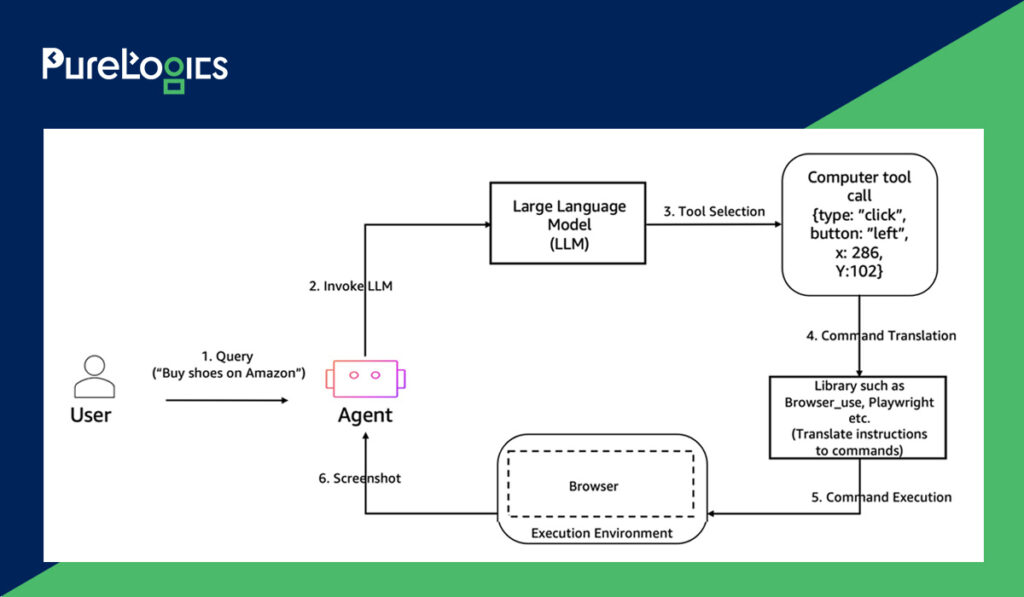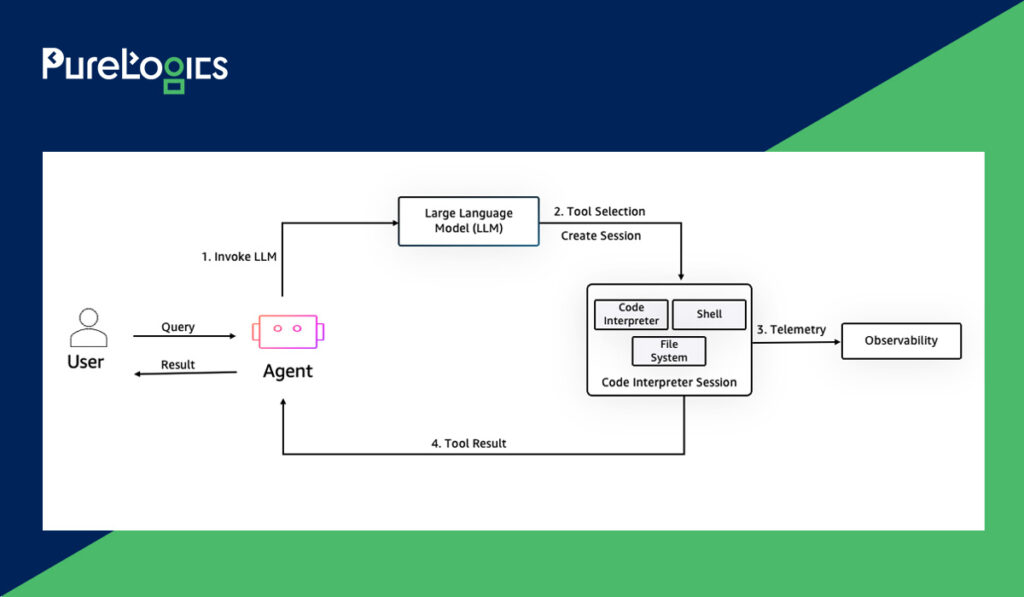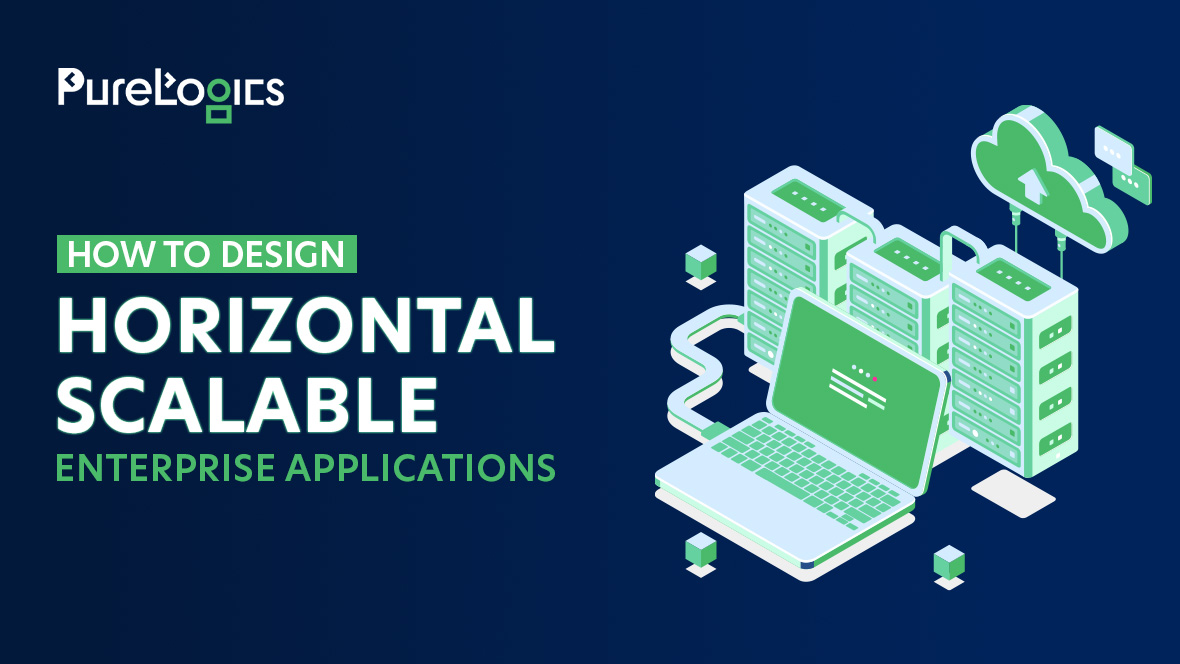You know that feeling when your AI agent works perfectly in your local environment, but then you need to scale to thousands of users. This means building session management, identity controls, memory systems, and observability from the very start. Before you know it, you are spending months and huge finances on infrastructure, and this is where Amazon Bedrock AgentCore comes in to rescue.
In this blog, we are going to tell you all about Amazon Bedrock AgentCore, which helps developers and AI engineers quickly and securely deploy AI agents. Therefore, bridging the gap between proof of concept and production of AI agents.
Latest: In July at AWS Summit NewYork, Amazon released Bedrock AgentCore to develop and operate scalable AI agents. The Agents do not simply follow pre-programmed rules; they understand the context and make informed decisions.
Source: AWS
If you are thinking about this latest development and how it is going to change the deployment of AI agents for enterprises. Then read this blog till the end!
What Is an Amazon Bedrock AgentCore?
As companies rush to adopt AI agents, they face challenges like the development of secure and scalable systems that can operate autonomously. Here, the Amazon Bedrock AgentCore is the gateway to this possibility as it helps the developers effectively bridge the gap between production and proof of concept of AI agents.
In simple words, Amazon Bedrock AgentCore is a comprehensive set of services to help companies deploy and operate AI agents using any model and framework.
Source: AWS
Furthermore, it provides a composable solution equipping the organizations to move their agents from prototypes to applications that can accommodate millions of end-users. Here’s how companies can use it.
What Is Amazon Bedrock AgentCore Used For?
Amazon Bedrock AgentCore can help companies become efficient in their operations. Below are the ways in which it can be used:
- AgentCore can remove months of backend development for identity, memory, observability, tool access, and runtime environments. Thus, it allows the developers to focus more on agentic logic instead of infrastructure.
- Agents can gain short and long-term capabilities that can help in remembering the prior interactions and adapt to customer-specific context.
- AgentCore Runtime can serve the foundational requirements of enterprises by providing serverless environments that safely isolate user sessions.
Moreover, the wide range of services offered by Amazon Bedrock AgentCore can make the deployment of AI agents efficient. Its comprehensive suite of services, such as runtime environment and memory management, etc, is changing the agent development lifecycle from a complex engineering challenge into a smooth deployment process. Thus, making autonomous AI systems not just possible but practical.
Amazon Bedrock AgentCore Services
Amazon dropped these services last month, designed to work with any framework and model.
AgentCore Runtime
AgentCore offers interactive experiences with low-latency environments and complex asynchronous workloads running up to eight hours (the longest in the industry).
AgentCore Memory
Agents will depend on a complex memory infrastructure to function efficiently. Here, the AgentCore memory makes it easy for developers to create context-aware agents by providing long-term and short-term memory accuracy.
AgentCore Identity
This allows the agents to securely access AWS services and third-party tools and resources to fulfill user requests using the right authentication. It also provides secure agent authentication, integrating with existing identity providers (Amazon Cognito, Microsoft Entra ID, and Okta).
AgentCore Gateway
It provides secure access to a wide range of tools for real-world tasks, with easy transformation of APIs, AWS Lambda functions, and existing services into agent-compatible tools.
AgentCore Code Interpreter
It helps the developers customize environments with specific instance types and session properties to meet security needs. This is exceptionally useful because AI agents need to write and execute code safely in sandbox environments to validate reasoning, process data, and generate visualizations.
AgentCore Browser Tool
It provides an efficient, secure, cloud-based browser to allow AI agents to communicate with websites at scale for tasks like form completion or navigation.
AgentCore Observability
Powered by Amazon CloudWatch, it gives developers step-by-step visualization via built-in dashboards and telemetry for key metrics while integrating with existing observability systems.
Now you know about all these services, the real question is what they can do to change the business outcomes. Below, we are listing the concrete benefits of AgentCore for enterprises.
Benefits of Amazon Bedrock AgentCore Services
The AgentCore eliminates the development bottleneck that keeps most AI agents stuck in the prototype phase. Here are some of the more benefits:
- AgentCore services can be used individually and can be optimized to work together, liberating developers from the work of piecing together the components.
- It gives the development teams flexibility to maintain a preferred set of tools.
- The users can buy and run pre-built agents and agent tools from the AWS marketplace. With a few lines of code, the agents can connect to API-based agents and tools from AWS Marketplace with AgentCore Gateway to help run complex workflows while maintaining compliance.
- AgentCore removes the burden of developing foundational infrastructure by managing operational overhead, allowing development teams to bring groundbreaking agentic solutions to market.
All in all, AWS Marketplace’s AI agents and tools offer a centralized place for ready-to-integrate agent solutions. Allowing businesses to speed up their AI initiatives and scale faster with specialized professional services support.
Recent Developments
August has just begun, and AWS has published two blogs explaining the usability and working of AgentCore Browser Tool and AgentCore Code Interpreter.
AgentCore Browser Tool
Developers can now offload infrastructure responsibilities to AWS and focus on building intelligent agents rather than maintaining browser farms. Each browser session runs in an isolated environment protected by AWS security controls, reducing data leakage risks.
How the AgentCore Browser Tool Works with AI Agents
Amazon Bedrock AgentCore Browser runs in a secure, isolated containerized environment within AgentCore that protects your local system from web activities. You can interact with AgentCore Browser Tool using browser actuation libraries (Playwright) or use the AI agentic frameworks for browser automation (Amazon Nova Act and Browser Use).
These two tools, Amazon Nova Act and Browser Use, work with AgentCore Browser to take natural language instructions from the user end and change them to actions on the browser by following the workflow given below.
Browser Automation Workflow: A user generates a natural language query, for instance, searches for sneakers on Amazon.
- The agentic framework (Amazon Nova or Browser Use) sends the query to LLM.
- The LLM reasons and outputs structured instructions (e.g., JSON encoded).
- The agentic framework then maps these instructions into browser actuation commands.
- The Browser Automation commands are carried out within the AgentCore Browser through a secure WebSocket connection.
- The agent gets the browser response and screenshot for further reasoning.
- Until the full execution of the task, this cycle continues.
Below, you can also see the visual representation.

Source: AWS
Amazon Bedrock AgentCore Code Interpreter
It is a fully managed service that facilitates the AI agents to execute code in an isolated sandbox environment securely.

Source: AWS
How the AgentCore Code Interpreter works: An agent is developed and deployed (for instance, on the AgentCore Runtime), so when a user sends a prompt, the AgentCore Runtime initiates a secure and isolated session. Let us tell you more about this process:
- Afterwards, the agents underlying LLM assess the prompt and determine that it needs to perform computation and select AgentCore Code Interpreter as the appropriate tool.
- The agent then generates a code snippet (e.g., using the pandas library) to read a data file and matplotlib to create a plot. This code is transferred to the AgentCore Code Interpreter, which executes in a dedicated sandboxed session. The agent can read from and write files to the session-specific file system.
- The AgentCore Code Interpreter gives the execution result back to the agent, creating a feedback loop that facilitates the agent. This feedback loop enables the agents to engage in iterative problem-solving by refining their approach and debugging their code.
- Agent retains conversational context throughout the entire session duration across multiple interaction turns.
- A detailed execution trace capturing agent behaviour and logs is maintained throughout the process for audit and debugging purposes.
Are There Any Security Risks In Amazon Bedrock Agent Core?
Although Amazon promises security for every service and Amazon Bedrock AgentCore as a whole, there are some concerns. Especially around Code Interpreters, while intended for Agent use, these interpreters can be externally invoked using IAM (Identity and Access Management) permissions (bedrock-agentcore: InvokeCodeInterpreter). This allows any identity with these permissions to execute code in potentially privileged roles. Also, according to some sources, the sandbox only partially limits access.
Furthermore, the Service Control Policies (SCPs) are the only effective way to centrally restrict access, but require organizational-level setup, which is not possible for many developers.
Get Started with AgentCore Today!
Amazon Bedrock AgentCore is not just another toolkit; it’s a strategic shift towards a modular and production-ready AI agent deployment. It helps minimize the barrier for the real-world adoption of AI agents across industries. But what makes AgentCore truly impactful is its implementation. That’s where engineering partners like PureLogics enter. As a consulting Partner of Amazon Web Services,we assist businesses in automating or managing their operations. Book your 30-minute free consultation with us.
FAQs
What is an AWS Bedrock agent?
It is an intelligent, serverless component that uses foundational models to automate tasks based on natural language instructions. It can call APIs, interact with tools, and effectively manage workflows without custom code. They are built for secure, scalable, and enterprise use.
What is Amazon Bedrock used for?
It is used to develop and deploy generative AI applications using foundation models allows the developers to customize models and integrate them into workflows. Bedrock is ideal for use in chatbots, content creation, and process automation.
What is the difference between Amazon Bedrock and SageMaker?
Amazon Bedrock is a fully managed service for developing generative AI apps using foundation models from leading companies via API access. There is no need to manage the infrastructure or training, whereas Amazon SageMaker is designed for building, training, and deploying custom machine learning models with full control over the ML lifecycle.
If simply put, Bedrock is ideal for efficient and low-code generative AI use cases in contrast to SageMaker, which is well-suited for custom model development and advanced ML workflows.
What is the difference between Amazon Lex and Bedrock?
Amazon Lex helps in specifically developing conversational interfaces such as chatbots and voice assistants. In contrast, Amazon Bedrock provides access to powerful foundational models for a range of generative AI tasks such as text generation, question answering, and summarization.


 [tta_listen_btn]
[tta_listen_btn]
 August 7 2025
August 7 2025


